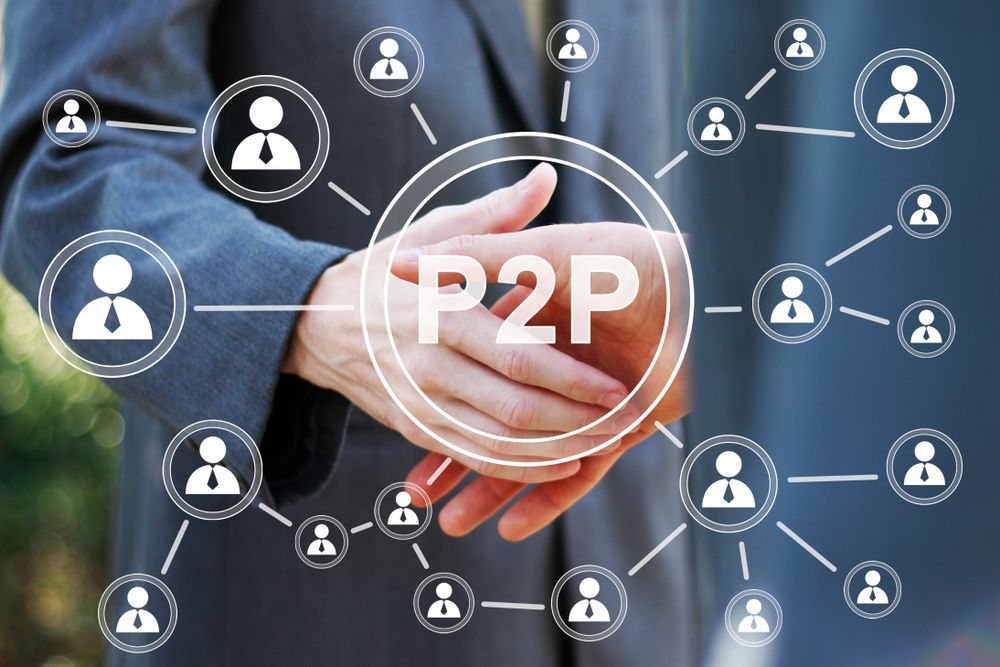
Welcome to the world of personal finance, where the journey to financial freedom is a path paved with knowledge, strategy, and innovation. In today’s economic landscape, individuals are increasingly seeking out alternative methods to manage and reduce personal debt. One such innovation that has been gaining traction is peer-to-peer (P2P) lending. This financial model has the potential to transform how people borrow and repay money, offering a more personalized and potentially less costly way to tackle personal debt. In this piece, we will explore the intricacies of P2P lending and its role in helping individuals lighten their debt load.
Understanding Peer-to-Peer Lending
Peer-to-peer lending, at its core, is a way for individuals to borrow and lend money without the involvement of traditional financial institutions like banks. Through online platforms, borrowers can request loans for various purposes, which are then funded by individual investors looking to earn interest on their capital. These platforms facilitate the matching of lenders with borrowers, setting interest rates based on the risk level of the borrower’s credit profile.
P2P lending platforms have grown in popularity because they often offer competitive interest rates compared to traditional loans, which can be beneficial for borrowers looking to consolidate high-interest debts such as credit card balances. Additionally, lenders can potentially earn higher returns on their investment compared to savings accounts or other low-risk investment vehicles.
The Benefits of P2P Lending for Debt Consolidation
One of the most significant advantages of P2P lending for borrowers is the opportunity to consolidate multiple debts into one loan with a lower interest rate. By doing so, individuals can simplify their financial management, reduce their monthly payments, and potentially shorten the time it takes to pay off their debts. Debt consolidation through P2P lending can also lead to an improved credit score over time, as consistent, on-time payments are reported to credit bureaus.
Moreover, P2P platforms often provide a more streamlined and user-friendly application process compared to traditional banks. The quick access to funds and the absence of early repayment penalties further enhance the appeal of P2P lending for those seeking to get a handle on their debt.
Risks and Considerations for Borrowers
While P2P lending can be a powerful tool for debt reduction, it’s not without its risks. Borrowers must be aware that P2P loans are still loans that need to be repaid. Failure to do so can result in damage to one’s credit score, additional fees, and increased financial strain.
It’s essential for potential borrowers to thoroughly research and compare different P2P lending platforms to understand their terms, interest rates, and fees. Borrowers should also assess their financial situation to ensure they can comfortably meet the repayment schedule. Some P2P loans may have variable interest rates, which can fluctuate and affect monthly payments.
How P2P Lending Affects Lenders
On the flip side of the P2P lending equation are the lenders, who are essentially investing in the debt of the borrowers. For lenders, P2P platforms offer an opportunity to diversify their investment portfolios and potentially receive higher returns than traditional savings options. However, as with any investment, there is the risk of loss if borrowers default on their loans.
Lenders should carefully consider the risk associated with each loan, which is often reflected in the interest rate. Higher-risk loans yield higher interest rates but come with a greater chance of default. Many P2P platforms offer risk assessment tools and allow lenders to spread their investment across multiple loans to mitigate potential losses.
The Future of P2P Lending and Debt Management
The P2P lending industry is evolving, and as it grows, it could become an even more integral part of the debt management landscape. Technological advancements, such as the integration of artificial intelligence for risk assessment and blockchain for secure transactions, may enhance the efficiency and security of P2P lending.
As consumer awareness of P2P lending increases, we may see a shift in how people approach borrowing and investing, with a greater focus on community-based financial solutions. This could lead to more innovative debt management strategies and financial empowerment for individuals.
P2P lending offers a promising alternative for those looking to reduce personal debt. By providing competitive interest rates, convenience, and a platform for financial community engagement, it has the potential to reshape the borrowing landscape. As with any financial decision, it’s vital for individuals to conduct their due diligence and consider their unique circumstances before diving into P2P lending. With careful consideration and responsible use, P2P lending could be a key player in achieving personal financial freedom.
